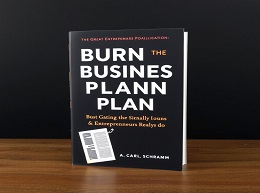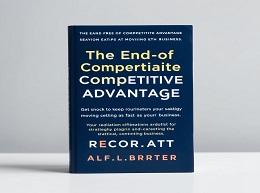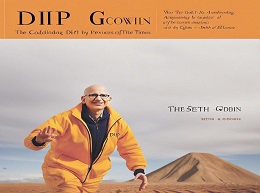The Innovator's Hypothesis: How Cheap Experiments Are Worth More than Good Ideas

The Innovator's Hypothesis: How Cheap Experiments Are Worth More than Good Ideas
Innovation is the lifeblood of successful businesses in the modern world, but how do you foster an innovative culture? Michael Schrage's "The Innovator's Hypothesis: How Cheap Experiments Are Worth More than Good Ideas" provides a compelling answer: through inexpensive, iterative experiments. Schrage, a research fellow at MIT Sloan School’s Center for Digital Business, argues that the traditional reliance on brainstorming and grand ideas is less effective than a culture of rapid experimentation. This review delves into the key concepts, strategies, and real-world applications presented in Schrage's book, offering readers valuable insights into driving innovation.
The Fallacy of the Big Idea
Schrage challenges the conventional wisdom that great innovation starts with a groundbreaking idea. Instead, he posits that the obsession with "big ideas" can stifle true innovation by placing too much emphasis on the idea itself rather than the process of testing and refining ideas.
Example: Kodak's Downfall
Kodak had the idea for digital cameras long before they became mainstream but failed to experiment and adapt to the market changes effectively. This example illustrates how clinging to a big idea without iterative experimentation can lead to missed opportunities.
The Power of Cheap Experiments
Schrage introduces the concept of "cheap experiments" as small, manageable tests that organizations can quickly implement and learn from. These experiments allow businesses to validate ideas with minimal risk and investment, promoting a more dynamic and responsive approach to innovation.
Example: Google's 20% Time
Google’s practice of allowing employees to spend 20% of their time on side projects is a prime example of cheap experiments fostering innovation. This policy has led to the development of successful products like Gmail and Google News, demonstrating the effectiveness of small-scale experimentation.
Overview of the 5x5 Framework
Central to Schrage's methodology is the 5x5 framework, which involves creating five hypotheses and testing each with five small experiments. This approach encourages rapid iteration and learning, ensuring that only the most promising ideas are scaled up.
Step-by-Step Guide
1. Identify Hypotheses : Generate five hypotheses that you want to test. These should be specific, actionable, and measurable.
2. Design Experiments : For each hypothesis, design five experiments that are low-cost and quick to implement.
3. Execute and Measure : Conduct the experiments, gathering data on their performance and outcomes.
4. Analyze Results : Evaluate the results to determine which hypotheses hold the most promise.
5. Iterate or Pivot : Based on the findings, decide whether to iterate on successful experiments or pivot away from less promising ones.
Example: Amazon's A/B Testing
Amazon extensively uses A/B testing, a form of cheap experiments, to optimize its website and services. By constantly running small-scale tests on everything from webpage design to product recommendations, Amazon continually refines its user experience and drives growth.
Building an Experimental Culture
Creating a culture that embraces experimentation requires more than just implementing a framework; it necessitates a fundamental shift in organizational mindset. Schrage emphasizes the importance of leadership in fostering an environment where experimentation is encouraged and failure is viewed as a learning opportunity.
Example: Intuit’s Innovation Culture
Intuit, the software company behind TurboTax and QuickBooks, has cultivated a culture of experimentation through its "Design for Delight" philosophy. This approach empowers employees to run small experiments aimed at delighting customers, fostering a culture of continuous innovation.
Overcoming Resistance
Resistance to change is a common challenge in many organizations. Schrage offers strategies to overcome this, such as highlighting early successes of experiments, providing training on experimental techniques, and rewarding employees for their contributions to the experimentation process.
Example: Overcoming Resistance at Adobe
Adobe faced initial resistance when introducing its "Kickbox" innovation program, which gives employees a small budget and a structured process for experimentation. By showcasing early successes and providing resources to support the program, Adobe managed to embed a culture of experimentation throughout the company.
Key Metrics for Success
To effectively measure the impact of experiments, Schrage suggests focusing on key metrics that align with the organization's strategic goals. These metrics could include customer engagement, conversion rates, cost savings, or time-to-market.
Example: Airbnb’s Data-Driven Experiments
Airbnb leverages data to measure the success of its experiments, using metrics such as booking rates and user engagement to assess the impact of changes to its platform. This data-driven approach ensures that only the most effective innovations are scaled up.
Learning from Failure
Schrage argues that not all experiments will succeed, and that’s okay. The key is to learn from these failures and iterate quickly. He suggests conducting post-mortems on failed experiments to extract valuable lessons and improve future efforts.
Example: Failure at Microsoft
Microsoft's failure with its initial launch of the Xbox One, which was criticized for its high price and mandatory online connectivity, provided the company with crucial feedback. By learning from this failure, Microsoft was able to pivot and improve subsequent iterations of the Xbox.
Case Study 1: GE’s FastWorks Program
GE’s FastWorks program, inspired by the Lean Startup methodology, exemplifies the principles outlined in Schrage’s book. By implementing fast, iterative experiments, GE has been able to accelerate innovation and bring products to market more efficiently.
Details:
FastWorks encourages employees to test hypotheses quickly and learn from real-world feedback. This approach has led to the development of new products and services, such as more energy-efficient appliances and improved medical imaging technology.
Case Study 2: 3M’s Innovation Strategy
3M, known for its innovative products like Post-it Notes and Scotch Tape, has long embraced a culture of experimentation. The company’s "15% rule" allows employees to spend a portion of their time on projects of their own choosing, fostering an environment where experimentation thrives.
Details:
This policy has resulted in numerous successful products, demonstrating the power of giving employees the freedom and resources to experiment. 3M’s commitment to small-scale experimentation has been a key driver of its sustained innovation and market leadership.
Embracing the Experimentation Mindset
"The Innovator's Hypothesis" by Michael Schrage offers a transformative approach to innovation. By shifting the focus from big ideas to cheap, iterative experiments, organizations can foster a culture of continuous learning and adaptation. Schrage's 5x5 framework provides a practical roadmap for implementing this mindset, emphasizing the importance of rapid testing, learning from failure, and scaling successful experiments.













